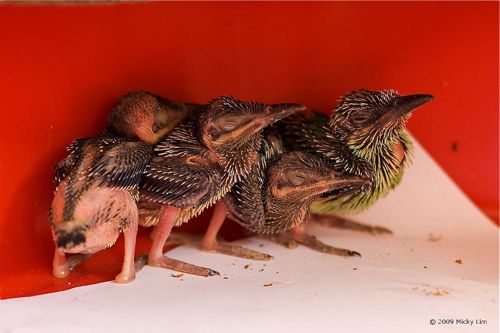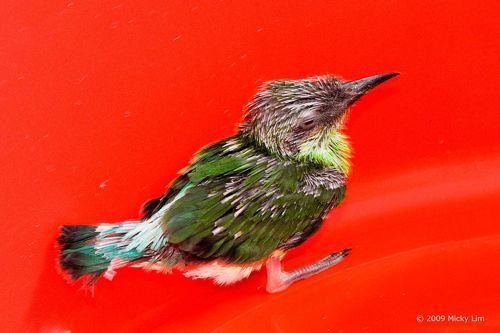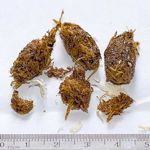Check out the earlier parts of the Blue-throated Bee-eaters (Merops viridis) saga: 1, 2, 3, 4, 5, 6, 7, 8 and 9.
Details, images and videos of the chicks rescued from nests #2 and #4 have been provided by Micky Lim a.k.a. limmick.
The four chicks above are huddling against one another just after being fed on the morning after they were rescued. The smallest is on the left, but quite aggressive and a bully at times, with the largest on the extreme right showing some greenish feathers. Their lengths range from ~ 8.5 to ~ 11.5 cm. Note the brownish pin feathers with whitish tips, mainly on the wings. The youngest chick has more bare skin devoid of pin feathers while the oldest show green barbs unfolding from the sheath.
The hand-reared chicks were kept in a cage and fed mealworms. Video clips of them being fed and cleaned can be viewed HERE: 1, 2, 3 and 4.
On average the chicks grew about 0.5cm daily for the first week.
The image of the oldest chick above, taken on 12th June, shows the greenish wing feathers having been further unsheathed, although not fully so. Note the pin feathers around the throat are turning light green while the tail feathers are becoming blue. The chick is obviously not yet ready to fledge.
The pellets shown on the left, composed of the undigested parts of the mealworms, were regurgitated by the chicks.
This post is a cooperative effort between NaturePixels.org and BESG to bring the study of bird behaviour through photography to a wider audience.












One Response